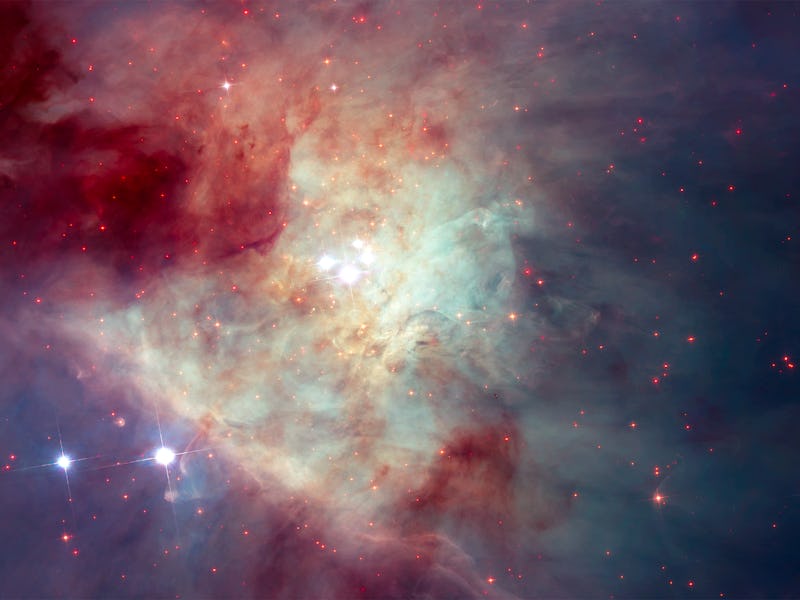Medieval Europe wasn’t the only place in the universe marred by war during the Middle Ages. In the 1400s, there was a celestial battle raging in the night sky. A group of stars were fighting for their gravitational territory in the Orion Arm of the Milky Way, which ended in at least three of them being hurtled off into the galaxy without so much as a clue as to where they went. Though two drifting stars had been found in the 90s, it wasn’t until 2015 that astronomers identified the third star and could finally confirm the location of the original event, thanks to the Hubble Space Telescope.
In results published in The Astrophysical Journal Letters on Monday, the research team details learning how the rogue star, which they are calling “Source-X,” had moved significantly compared to Hubble images taken in 1998, judging that it must be moving at 130,000 mph. With that information they were able to trace Source-X back to the Kleinmann-Low Nebula, near the center of the Orion Nebula complex, about 1,300 light-years away — the same location where they had also traced back two other runaway stars.
The motion of the newly discovered runaway star in the Orion Nebula.
Those stars, which go by the names Source I and Becklin-Neugebauer (BN), were both found in the ‘90s. BN traveled at about 60,000 mph, while Source I was moseying along at 22,000 mph. But, without Source-X, astronomers really couldn’t pinpoint where they had come from.
A Hubble close-up view of the stars is shown at top right. The birthplace of the multi-star system is marked "initial position." Two of the stars — labeled BN, for Becklin-Neugebauer, and "I," for source I — were discovered decades ago. Source I is embedded in thick dust and cannot be seen. The third star, "x," for source x, was recently discovered to have moved noticeably between 1998 and 2015, as shown in the inset image at bottom right. Source x is traveling at an unusually high speed of 130,000 miles per hour, which is 30 times faster than the velocity of most stars in the nebula.
Now, after wrangling all three, scientists can point to the exact time and location of the event, giving them very rare evidence of a star cluster tearing apart.
“The new Hubble observations provide very strong evidence that the three stars were ejected from a multiple-star system,” lead researcher Kevin Luhman, a professor at Penn State University, said in a press release. “Astronomers had previously found a few other examples of fast-moving stars that trace back to multiple-star systems, and therefore were likely ejected. But these three stars are the youngest examples of such ejected stars.”
Luhman says the stars are probably only a few thousand years old and still show remnants of their pre-natal disks, which are rings of dust that spin rapidly around a star while it is forming.
This remarkable discovery is helping scientists understand how young star clusters eventually duke it out for their place in the galaxy, which they believe happens when two stars get too close and form so much pressure that they push out all of the stars in the cluster in a cosmic explosion.
Astronomers are eager to hunt for more runaways drifting through the Milky Way once the James Webb Telescope launches in October 2018 to further understand how these events unfold.
